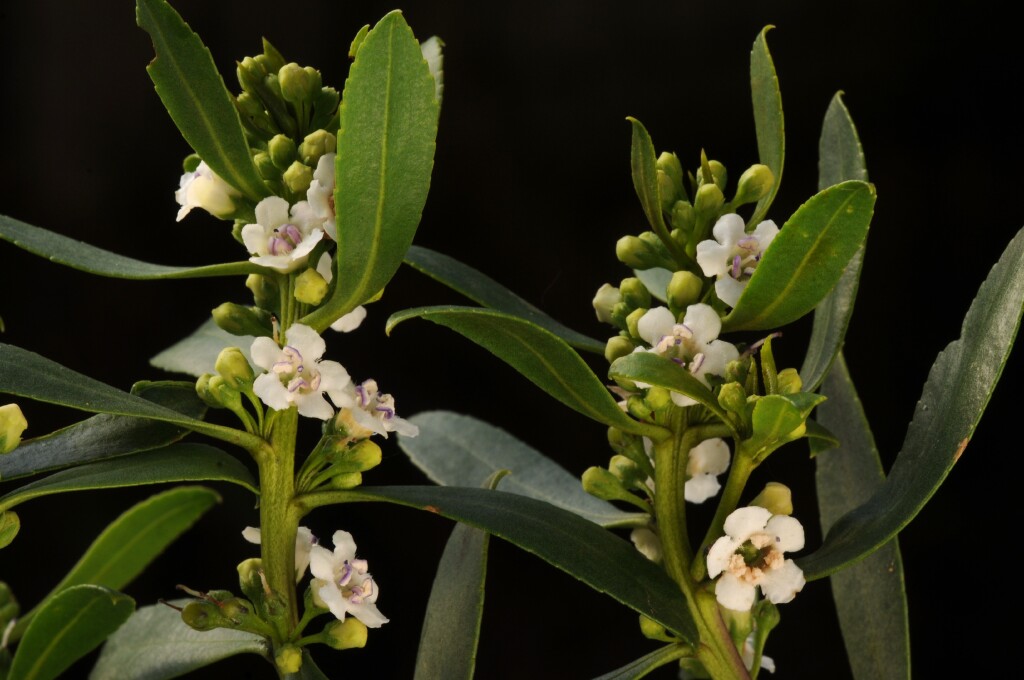Myoporum insulare
R.Br. Common BoobiallaShrub or tree to c. 6 m high, glabrous; branches obscurely tuberculate or non-tuberculate. Leaves alternate, scattered, lanceolate to broad-elliptic, mostly 3–9 cm long, 10–22 mm wide, thick and fleshy, apex acute or obtuse, margins entire or serrulate towards apex; petiolate. Inflorescences 3–8-flowered; pedicels 5–10 mm long, glabrous. Sepals more or less ovate, usually 2–3 mm long, acute or obtuse, imbricate, margins winged and sometimes irregularly toothed, glabrous; corolla 3–6 mm long, glabrous outside, inside of lobes pubescent, white, often spotted purplish on lobes and upper tube; stamens included; ovary glabrous, style glabrous or pubescent. Fruit globose, c. 8 mm diam., succulent, bluish-purple, drying brownish. Flowers mainly Sep.–Dec.
MuM, Wim, GleP, Brid, VVP, VRiv, MuF, GipP, OtP, WaP, CVU, GGr, DunT, EGL, EGU, WPro, HSF, OtR, Strz. Also WA, SA, NSW, Tas. A frequent component of coastal habitats, commonly on dunes and cliffs, and extending well inland in the west.
A very variable species with respect to stature and leaf morphology (size, shape and degree of serration). Populations containing individuals with distinctly different foliage-forms are sometimes encountered.
Jeanes, J.A. (1999). Myoporaceae. In: Walsh, N.G.; Entwisle, T.J., Flora of Victoria Vol. 4, Cornaceae to Asteraceae, pp. 528–539. Inkata Press, Melbourne.
 Spinning
Spinning




